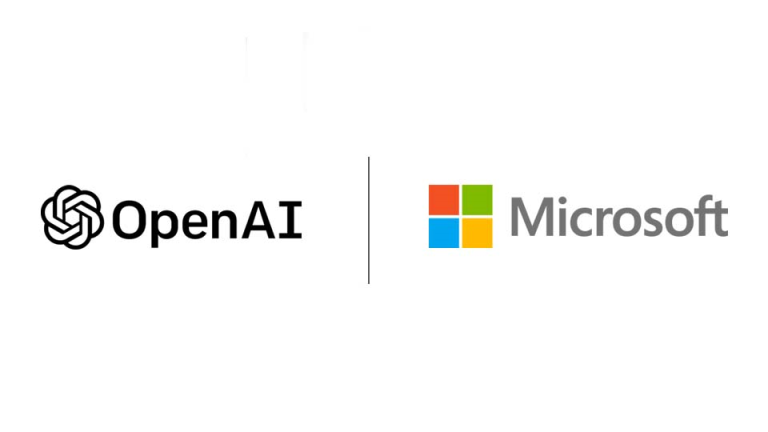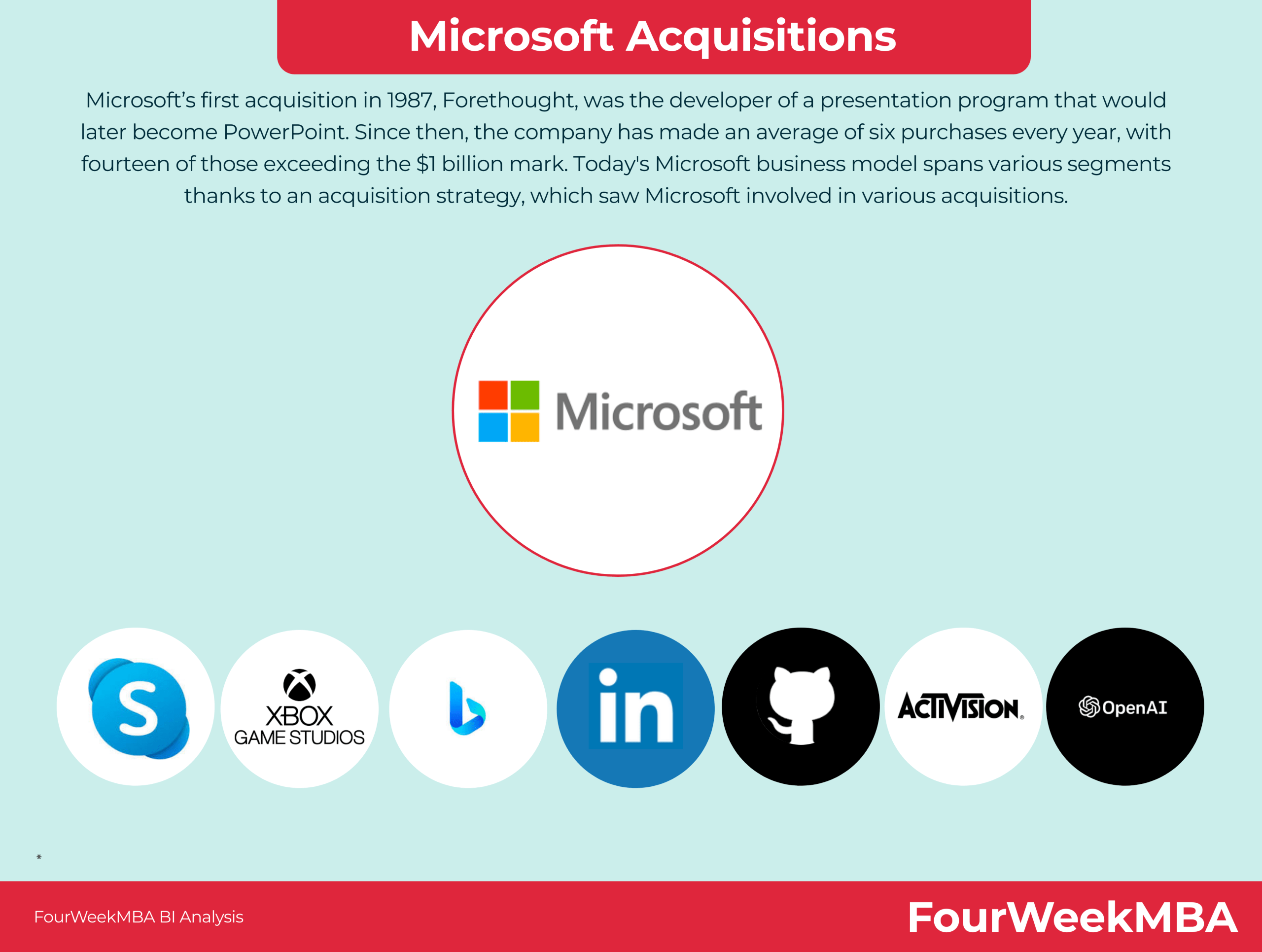Microsoft Acquisitions and Partnerships: Shaping the Future of Tech Innovation
In the ever-evolving world of technology, Microsoft has consistently positioned itself at the forefront of innovation, not only through its internal developments but also by strategically acquiring and partnering with companies that align with its vision. Over the years, these acquisitions and partnerships have played a pivotal role in shaping Microsoft’s growth, expanding its product offerings, and enhancing its competitive edge in the tech industry.
In this comprehensive article, we’ll dive deep into Microsoft’s acquisition strategy, highlighting some of the most significant deals in the company’s history, their impact on the tech landscape, and how these moves continue to influence the future of cloud computing, AI, gaming, and other emerging technologies.

The Strategic Importance of Acquisitions to Microsoft
Acquisitions are a critical part of Microsoft’s growth strategy. These deals allow the company to:
- Expand product and service offerings by integrating cutting-edge technologies.
- Strengthen market presence in emerging sectors such as cloud computing, AI, and gaming.
- Enhance talent acquisition by bringing in top experts and innovators from acquired companies.
- Improve competitiveness against rivals like Google and Amazon by filling gaps in their product portfolios.
Microsoft’s approach to acquisitions is not just about absorbing companies but also about ensuring the long-term integration and synergy that will benefit both the acquired companies and Microsoft’s existing offerings.
Noteworthy Microsoft Acquisitions
1. LinkedIn (2016)
One of Microsoft’s most high-profile acquisitions was the purchase of LinkedIn, the world’s largest professional networking platform, for $26.2 billion. This deal marked a significant expansion into the professional social networking space and brought Microsoft closer to its enterprise clients.
Why it was important:
- Enterprise Integration: LinkedIn’s capabilities complement Microsoft’s cloud and software offerings, especially in tools like Microsoft Office 365 and Dynamics 365, making it easier for businesses to connect with professionals.
- Data Analytics: Microsoft gained access to LinkedIn’s rich data, which can be used to enhance its AI-driven tools and improve user experience across its platforms.
Learn more about LinkedIn and Microsoft’s strategic integration

2. GitHub (2018)
In 2018, Microsoft acquired GitHub, the popular platform used by developers for code hosting, version control, and collaboration, for $7.5 billion in Microsoft stock.
Why it was important:
- Developer Ecosystem: GitHub is integral to the open-source software community. This acquisition signified Microsoft’s commitment to developers and the open-source movement.
- Azure Integration: GitHub’s services were deeply integrated into Microsoft Azure, providing cloud-based collaboration and development tools for businesses and developers.
Explore GitHub and how it enhances Microsoft’s developer tools
3. ZeniMax Media (2021)
In one of its largest acquisitions, Microsoft acquired ZeniMax Media, the parent company of Bethesda Softworks (the developer behind popular game franchises like The Elder Scrolls, Fallout, and DOOM), for $7.5 billion.
Why it was important:
- Gaming Portfolio Expansion: The acquisition significantly bolstered Microsoft’s gaming division, especially its Xbox Game Studios, and strengthened its position in the highly competitive gaming market.
- Xbox Game Pass: Microsoft’s Xbox Game Pass service was further enhanced by adding a robust library of new titles, providing greater value for subscribers.
Learn more about ZeniMax Media and Microsoft’s gaming strategy
4. Nuance Communications (2021)
In April 2021, Microsoft announced its acquisition of Nuance Communications, a leading AI company known for its innovations in speech recognition and natural language processing (NLP), for $19.7 billion.
Why it was important:
- AI and Healthcare: Nuance’s AI-powered solutions have transformed industries such as healthcare, where its tools have been used for medical transcription and clinical documentation. This acquisition strengthens Microsoft’s AI capabilities in the healthcare sector.
- Integration with Azure: The acquisition supports Microsoft’s goal of enhancing its cloud services, particularly in industries like healthcare, where Nuance’s technology can be integrated with Microsoft Azure.
Read more about Microsoft’s AI-driven healthcare solutions

5. Activision Blizzard (2022)
Microsoft announced its monumental acquisition of Activision Blizzard, the gaming giant behind Call of Duty, World of Warcraft, and Candy Crush, for a staggering $68.7 billion.
Why it was important:
- Strengthening Gaming and Cloud Gaming: This acquisition was pivotal for Microsoft’s cloud gaming platform, Xbox Game Pass, which now has access to a treasure trove of highly popular gaming titles.
- Metaverse Strategy: Activision’s immersive gaming experiences align with Microsoft’s ambitions in the metaverse, offering users access to expansive virtual worlds that integrate seamlessly with cloud technology.
Find out more about Microsoft’s gaming vision
Strategic Partnerships that Empower Microsoft
While acquisitions have been essential to Microsoft’s growth, partnerships have also played a critical role in expanding its market reach and enhancing its capabilities. Here are some key Microsoft partnerships that have had a significant impact on the tech landscape:
1. OpenAI (2019)
In 2019, Microsoft entered a partnership with OpenAI, a leader in the field of artificial intelligence. Microsoft invested $1 billion in OpenAI to advance AI research and develop powerful AI tools.
Why it was important:
- Azure AI: The collaboration strengthened Microsoft’s position as a leader in cloud-based AI with the integration of OpenAI’s models into Microsoft Azure.
- Innovative AI Solutions: OpenAI’s GPT-3 and other advanced language models were integrated into Microsoft products like Word and Excel, enhancing them with intelligent features like text prediction and natural language processing.
Explore Microsoft and OpenAI’s AI innovations
2. SAP (2020)
In 2020, Microsoft and SAP, a leading provider of enterprise software solutions, formed a strategic partnership to enhance business transformation.
Why it was important:
- Cloud Services: The partnership integrates SAP’s enterprise software with Microsoft’s cloud platform, Azure, allowing businesses to migrate their operations to the cloud seamlessly.
- AI and Machine Learning: SAP customers benefit from advanced AI and machine learning tools, boosting productivity and providing smarter business insights.
Learn about the SAP and Microsoft cloud collaboration
3. Oracle (2019)
Microsoft and Oracle, two of the largest players in the cloud computing space, teamed up in 2019 to provide more seamless integration between Microsoft Azure and Oracle Cloud.
Why it was important:
- Cloud Interoperability: Customers can now run their workloads across both cloud platforms, enhancing flexibility and reducing costs.
- Hybrid Cloud Solutions: The partnership enables businesses to leverage hybrid cloud capabilities, combining the strengths of both Azure and Oracle Cloud.
Explore Oracle and Microsoft’s cloud interoperability
Impact of Microsoft Acquisitions and Partnerships on the Tech Industry
The strategic acquisitions and partnerships made by Microsoft have had far-reaching effects on the tech industry. Here are a few ways these moves have shaped the future:
- Innovation in AI and Cloud: Microsoft’s investments in AI, especially through partnerships like OpenAI, have accelerated advancements in cloud computing, leading to more powerful and efficient tools.
- Expanded Gaming Ecosystem: With acquisitions like ZeniMax Media and Activision Blizzard, Microsoft has strengthened its position in the gaming industry, setting the stage for innovations in cloud gaming and metaverse experiences.
- Cross-Industry Integration: Microsoft’s partnerships with SAP, Oracle, and others have facilitated cross-industry collaborations, enabling businesses to seamlessly integrate cloud-based solutions into their operations.
FAQs About Microsoft Acquisitions and Partnerships
What is the most significant acquisition by Microsoft?
The LinkedIn acquisition in 2016, valued at $26.2 billion, is one of Microsoft’s most important, expanding its reach into the professional networking and enterprise software markets.
**How has Microsoft’s acquisition
of GitHub impacted developers?**
GitHub’s integration with Microsoft tools has provided developers with enhanced collaboration capabilities, especially when paired with Azure DevOps and Visual Studio Code.
Why does Microsoft acquire gaming companies like ZeniMax and Activision?
These acquisitions help Microsoft strengthen its gaming division, enhance its Xbox Game Pass offering, and solidify its position in the competitive gaming market.
What role do partnerships play in Microsoft’s strategy?
Partnerships enable Microsoft to expand its product capabilities, especially in areas like cloud computing, AI, and enterprise software, by leveraging the strengths of other industry leaders.
Conclusion
Microsoft’s acquisition and partnership strategy has proven to be an instrumental force in shaping the future of technology. Through acquisitions like LinkedIn, GitHub, and Activision Blizzard, and strategic partnerships with companies like OpenAI and SAP, Microsoft is consistently pushing the boundaries of innovation across various sectors. As the company continues to expand its capabilities, there is no doubt that it will remain a dominant force in the tech industry for years to come.
By making bold moves in key areas such as gaming, cloud computing, and AI, Microsoft is poised to lead the charge in the technological advancements of the future.

